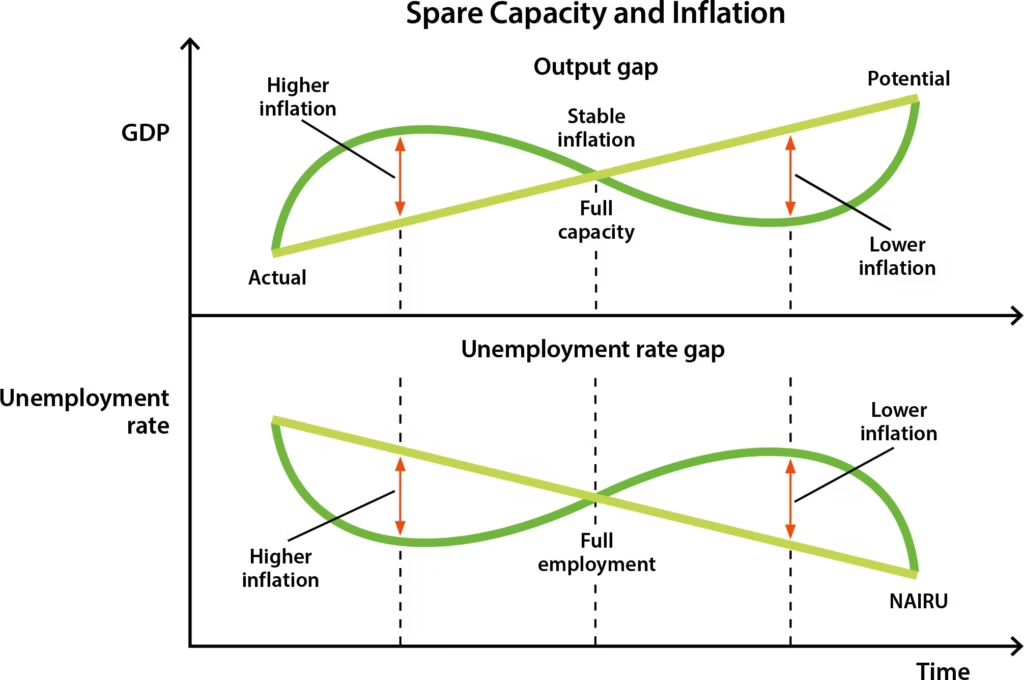NAIRU is the acronym for Non-Accelerating Inflation Rate of Unemployment. It is the level of unemployment below which the rate of inflation is expected to rise.
It means that, theoretically, the rate of inflation increases when the rate of unemployment goes below the NAIRU level.
For example, if the actual unemployment rate is below the NAIRU level for several years, the inflation rate accelerates to match the rise in inflationary expectations.
NAIRU is the lowest unemployment rate that can be sustained without causing inflation to rise. It’s a measure of the economy’s “spare capacity”
History of NAIRU
The concept of NAIRU arose from the concept of the Phillips Curve, which implies a negative correlation between the rate of inflation and the rate of unemployment in industrialized economies.
This concept meant that it was impossible for the government to implement measures that focused on reducing unemployment and the prices of goods at the same time.
However, economists started doubting the Phillips Curve in the 1970s when the rate of inflation and the rate of unemployment rose at the same time in industrialized countries. The situation was contrary to the theory that the Phillips Curve presented.

NAIRU vs. Natural Unemployment
Natural unemployment, or the natural rate of unemployment, is the minimum unemployment rate resulting from real, or voluntary, economic forces.
Natural unemployment reflects the number of people who are unemployed due to the structure of the labor force, such as those replaced by technology or those who lack specific skills to gain employment.
The term “full employment” is a misnomer since there are always workers looking for employment, including college graduates or those displaced by technological advances. In other words, there is always some movement of labor throughout the economy. The movement of labor in and out of employment—whether it’s voluntary or not—represents natural unemployment.
NAIRU has to do with the relationship between unemployment and inflation or rising prices. NAIRU is the specific level of unemployment whereby the economy does not cause inflation to increase.

Full Employment
Full employment is an economic situation in which all available labor resources are being used in the most efficient way possible. Full employment embodies the highest amount of skilled and unskilled labor that can be employed within an economy at any given time.
True full employment is an ideal—and probably unachievable—situation in which anyone who is willing and able to work can find a job, and unemployment is zero.
It is a theoretical goal for economic policymakers to aim for rather than an actually observed state of the economy. In practical terms, economists can define various levels of full employment that are associated with low but non-zero rates of unemployment.
Unemployment of 5% or lower is often considered full employment in a real-world context.
